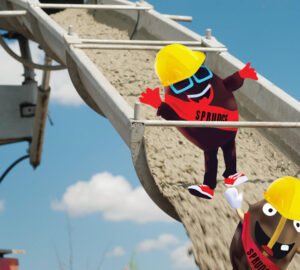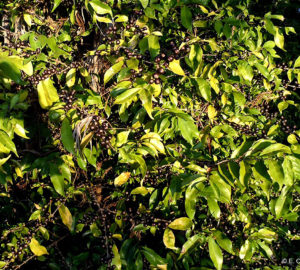It took a long time just to get here – a slow, vibrating bus ride up the 101 – and I’ve left my notebook in a backpack ensconced in the belly of the motorcoach. Nobody’s talking, the occupants of this bus, which is evenly split between LAX-Santa Barbara commuters (40-70 year-olds) and people who are obviously Pull-A-Shot campers (20’s to 30-ish). The creeping silence is perhaps by dint of shyness, or jetlag, or the sheer perversity of the amassed strain of travel it takes to get from Point A (“Point A” being wherever you’re here from, which could be as far away as New York) to Point B (“Point B” being El Capitan Canyon, around 2 and half hours north of Los Angeles, just off of Highway 101, which runs the lengths of the Pacific coast and matches its vastness). It’s the sum whole of those 3 things, with some nervous anticipation thrown in. Every last person on the bus looks in need of coffee.
If you lean your head against one of these bus windows, it will shudder and buzz and vibrate in response. The conductor instructs us in great detail on the bathroom facilities and his “honor system” cache of cool drinks and candy bars, available towards the front of the cabin. As the coach cruises its way north, first through the subtropical canyons and concrete boulevards of L.A. (which part, I’m not sure of; where in Los Angeles is the airport located?), then through the rolling arid hills of the Santa Barbara Mountains, and I realize that I’ve actually spent more time in Mexico than I have in Southern California, and that this is the touchstone my mind leaps to for spatial contextualization. This was all a part of Mexico once; the thought I keep having, “this looks just like Mexico”, is not inaccurate, but there are more car dealerships here in California, more Chipotles.
Our journey from the airport Sisephyanly tedious, a neigh-endless stretch of transport up Highway 101, the travel punctuated only by a misstep at the Santa Barbara airport (we attempt to pick up more campers who flew in via SB, but no one is there waiting for us, and in the process our bus is gingerly maneuvered into a no-parking zone, in a construction area, and we get stuck, are forced to back out with caution lights blinking, and I almost want to clap for the bus driver when he successfully pilots us out of the mess, ass backwards, but nobody else claps first and I’m scared to break the silence in the cabin). Highway 101 keeps going and going, linking Tijuana with Port Angeles, Washington, running in a meandering set of switchbacks and elevation changes up Pacific coast, through California, Oregon and Washington state.
Eventually we arrive at the El Capitan campground. It looks sparse at first, campers outnumbered by tents, cabins, yurts, and lean-tos, but then as 5 o’clock hits the campers pour out of this cobbled assortment of domiciles and into the open evening air, beneath the oak, eucalyptus, and avocado trees. Warnings at the base camp indicate that we are in the presence of black bears, rattlesnakes, quail, mountain lions and deer (independent confirmation later expands this list to include owls, foxes, woodepeckers, chipmunks, and omnipresent yellow jackets, who are repelled by nothing, not even cigarette smoke or curse words).
Classes are offered all day, each day, but in the evening time, after 5pm…well, these sorts of things are inevitably social functions as much as they are are career advancement opportunities / training seminars / chances to commune with nature. (To be clear: Pull-A-Shot is indeed a wonderful opportunity for education, first, and career advancement as well, with no shortage of job offers being bandied about.) From an objective perspective, this social business is a part of the fun – sit in at the hotel bar during an insurance underwriter’s convention, or go backstage at a music festival, and you’ll find much the same. But for what it’s worth, the at-times insular nature of specialty coffee (its celebrities, its family tree) has been derided by some as an impediment to growth, a milieu that could very well ground specialty coffee’s otherwise rising star. Does a camp like this promote education and opportunity while sacrificing inclusiveness?
Such denouncements are accurate in their own way, but overlook the subcultural currency being openly exchanged among the campers, indeed, by all members of any cult, clique, or sequestered subgrouping. “Sequestered” gets at the crux of it; we’re all here, out in the woods, with nothing much else to do after 5pm but talk, meet, cloister, schmooze, flirt and booze. (Note: this ordering owes more to linguistic nicety than weighed importance. Were this listing a meritocracy, flirting and boozing would listed first, and as such, La Marzocco’s converted espresso machine beer tap (the “BS3) assumes the role of talisman, gathering place and divining rod.)
But – but! – a subculture it is, replete with stars, unknowns, entaglements, desires, delicate misunderstandings, the au courant and the inaudible. Not everyone knows each other, but plenty is known, and only a fool would observe this sort of conflagration and deny its overt joys and simmering tensions. The wider world may blink in wonder at the degree of dedication and fanaticism shared by the 150+ people out here in the woods, but far from being insular and selfish, the wider world are the ones who’ll get to sip & relish the fruits of this fervor. It’s the cult that aims to please.
This campsite is bucolic, picturesque, truly beautiful. The ocean is just over there, and can be reached in pitch black darkness. Barista campers are split into 12 teams and pitted against each other in a series of contests and coffee services; team names include “Kama Sumatra”, “Learning The Harare Way” and, perhaps most regrettably, “The Sprobama Administration”. There is an In-N-Out Burger 20 minutes away, in Goleta proper. There are bees everywhere. Last night’s festivities devolved into a drunken glow-stick fire walk, and a pair of owls have made their hooting home above the upper campground yurt clusters. We’ll be here til Thursday.































